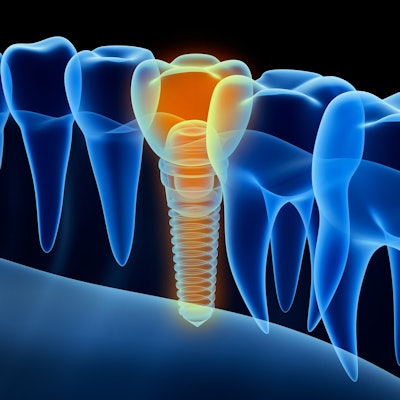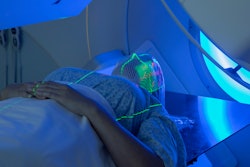
Implant-retained prostheses are used increasingly in the oral rehabilitation of patients with head and neck cancer (HNC). But when comparing fixed or removable prostheses, only one had better survival and complication-free survival rates in a recent study of patients with HNC.
Prosthodontic treatment of patients diagnosed with HNC can be challenging. Oftentimes, practitioners encounter altered anatomy, dry mouth, fragile mucosa, vulnerable tissues, impaired oral function, and a lack of emotional strength to tolerate treatment.
Conventional prostheses can provide limited benefit in these circumstances, and implant-retained prostheses are often indicated. Many previous outcome reports of oral rehabilitation in patients with HNC have focused primarily on implant survival and quality of life rather than prosthesis success or survival.
But in a study published in August in the Journal of Prosthetic Dentistry, researchers analyzed the survival rates and complication-free survival rates of implant-retained oral prostheses and the frequency and causes of failure and complications in patients with HNC.
A total of 153 patients diagnosed with HNC who completed implant-retained prosthodontic rehabilitation were included in the study. Patients had been provided with 221 prostheses.
"Fixed implant-retained prostheses had a higher 5-year survival rate and 5-year complication-free survival rate than removable implant-retained prostheses in patients with head and neck cancer," wrote the study authors, led by Dr. Dominic Laverty of the University of Birmingham in the U.K. (J Prosthet Dent, August 3, 2022)
The five-year survival rate was 87% for maxillary fixed prostheses, 79% for mandibular fixed prostheses, 66% for maxillary removable prostheses, and 50% for mandibular removable prostheses. The five-year complication-free survival rate was the highest for mandibular fixed prostheses at 62% followed by 58% for maxillary fixed prostheses, 36% for maxillary removable prostheses, and 29% for mandibular removable prostheses.
The five-year survival rate declined for all prostheses types with time, with the lowest complication-free survival rate being for mandibular removable prostheses. The most common cause of failure for fixed implant-retained prostheses was repeated fracture of the teeth. This finding is consistent with previous studies.
"Implant-based prosthetic treatment for this patient group can be unsuccessful and can involve a high maintenance burden in the form of the management of prosthetic complications and failure," Laverty and colleagues concluded.



















